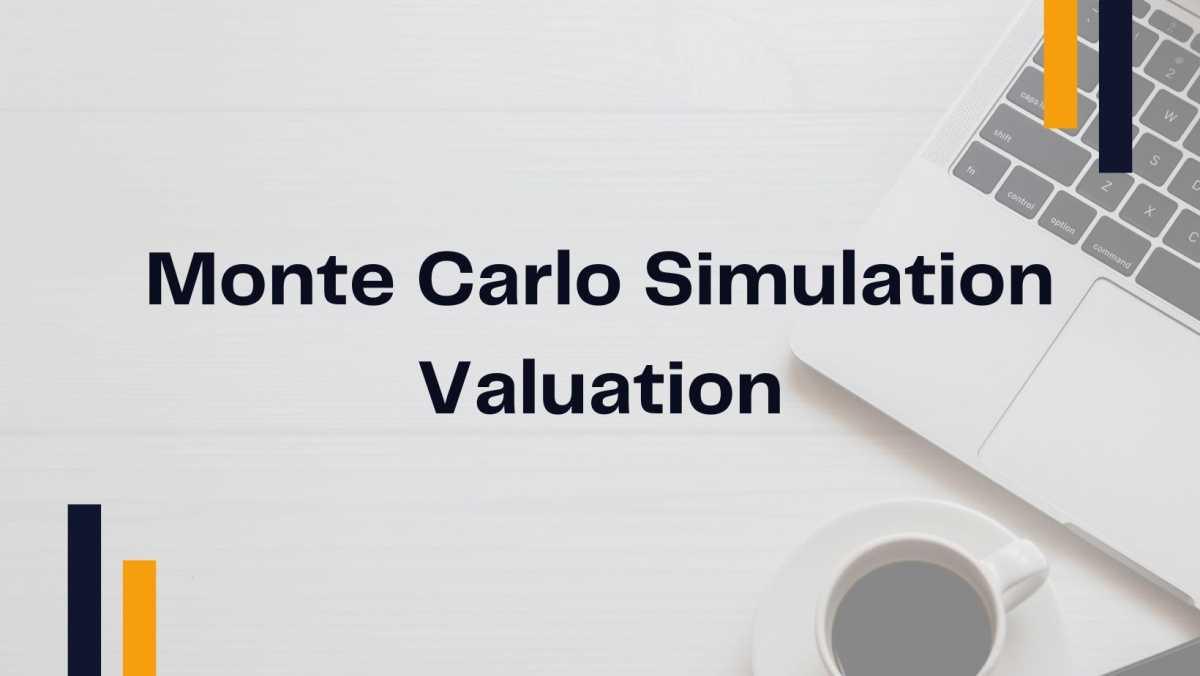Monte Carlo Simulation is widely used in pricing financial instruments, such as options, bonds, derivatives, and risk management. It is particularly useful for complex securities where analytical solutions (e.g., Black-Scholes for options) are difficult to apply.
Procedures to Perform Monte Carlo Simulation Valuation for Financial Instruments
Step 1: Define the Financial Instrument and Its Payoff Structure
- Identify the type of financial instrument:
- Options (European, American, Exotic)
- Bonds and Fixed Income Securities
- Swaps and Derivatives
- Structured Products
- Define the payoff function based on instrument type.
- Example (European Call Option):
Where:
- ST = Asset price at maturity
- K = Strike price
Step 2: Identify Key Risk Factors and Assumptions
- For equity derivatives:
- Stock price (S0)
- Volatility (σ-sigma)
- Risk-free rate (r)
- Time to maturity (T)
- For fixed income securities:
- Interest rate movements (e.g., modeled using Vasicek or CIR models)
- Credit risk and default probabilities
- For exotic options:
- Path-dependent payoffs (e.g., Asian options, Barrier options)
Step 3: Choose an Appropriate Stochastic Process
Monte Carlo models use stochastic differential equations (SDEs) to simulate price movements. Common models include:
-
Geometric Brownian Motion (GBM) (for stock prices)
Where:
- μ = Drift (expected return)
- σ = Volatility
- dW = Wiener process (random walk)
-
Hull-White Model (for interest rates)
Step 4: Simulate Multiple Price Paths
-
Generate thousands of random paths for the asset price using Monte Carlo simulation.
Step 5: Compute Expected Payoff and Discount to Present Value
-
For each simulated price path, calculate the instrument’s payoff at maturity.
-
Compute the expected payoff across all simulations.
-
Discount the expected payoff using the risk-free rate:
Where:
- P0 = Present value of the instrument
- N = Number of simulations
✅ Example (European Call Option)
- Simulate stock price paths for ST.
- Compute option payoffs: max(ST−K,0)
- Discount to present value at r.
Step 6: Analyze Results
- Mean valuation: Expected fair value of the instrument.
- Standard deviation: Measures valuation risk.
- Percentiles (5%, 95%): Confidence intervals for pricing.
- Histogram of valuations: Shows distribution of price outcomes.
Step 7: Conduct Sensitivity Analysis
- Vary key parameters (volatility, interest rate, time to maturity) to see how they impact valuation.
Key Advantages of Monte Carlo Simulation in Financial Instrument Valuation
✔ Handles complex payoffs and path-dependent options.
✔ Incorporates stochastic interest rates and volatility.
✔ Provides probabilistic price distributions instead of a single estimate.


